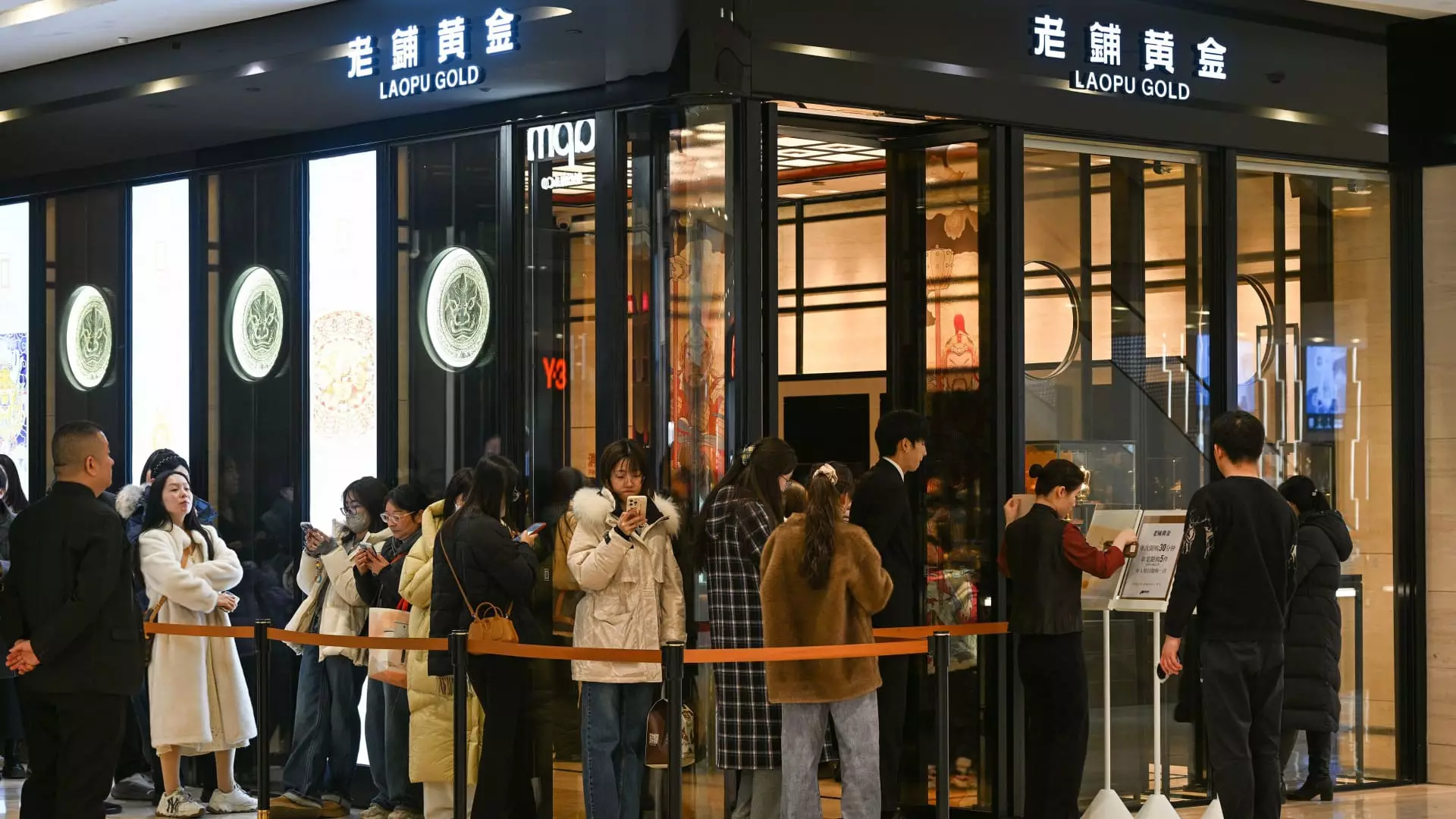Despite a reported uptick in consumer spending among China’s e-commerce giants, the reality remains that this growth is far from the exuberant pre-pandemic levels witnessed as recently as 2019. The latest financial disclosures from firms like Alibaba and JD.com demonstrate a flicker of hope, with year-on-year revenue growth indicating a positive trend. “Consumption growth is in a period of healthy recovery, but not [yet reaching] the high previously,” stated Charlie Chen from China Renaissance Securities. This assertion highlights a critical point: though there is improvement, it is neither comprehensive nor consistent across the board.
The conditions plaguing the Chinese economy—most notably a protracted slump in real estate—remain a heavy weight on the shoulders of consumers. Policymakers now consider boosting consumption a priority, but these efforts appear to skirt around the deeper issues affecting consumer confidence. Government initiatives, such as the expanded trade-in subsidy programs, aim to reinvigorate spending, particularly on electronics, home appliances, and even smartphones. However, the question lingers: are these measures enough to instill genuine consumer confidence or merely short-term band-aids?
Niche Growth Amid A General Decline
Interestingly, while some segments show signs of rejuvenation, the overall atmosphere of caution remains prominent. Companies like Laopu Gold—focused on culturally significant jewelry designs—are capitalizing on the heritage market and achieving staggering profit increases of over 236%. Toy companies, too, like Pop Mart, are reportedly doubling their revenue figures as domestic demand fluctuates. Yet, these instances of success are often overshadowed by broader worries about the economy’s sustainability, where many sectors are merely inching along.
The contrast becomes stark when examining the performance of fintech services, such as those reported by Tencent. A meager 3% growth in its fintech and business services section, a far cry from the booming 39% growth preceding the pandemic, suggests that consumer financial behavior is still cautious. Even as spending grows, it often stems from necessities rather than discretionary choices, which points to a deeper malaise in consumer sentiment.
A Glimmer of Hope in Travel and Services
One sector that illustrates potential is the travel industry, with companies like Trip.com reporting a robust 20% increase in net revenue for 2024. International travel has reportedly surpassed pre-pandemic levels, suggesting that consumers might be more willing to indulge in experiences rather than material goods. Yet, the emphasis on targeting the ‘silver generation,’ people aged over 50 years, unveils a stratified consumer behavior that could be indicative of a reluctance amongst younger, more financially strapped demographics.
Regular consumption of everyday goods, on the other hand, still faces substantial hurdles. Retail chains such as Miniso are navigating a saturated market where growth is tempered by an increase in local competition and a looming price-cutting war among electric vehicle manufacturers. The pressures within the beverage market reveal similar trends, with significant declines in same-store sales indicating a broader consumer weariness—perhaps a reluctance to spend on non-essential beverages like bubble tea in an uncertain economic climate.
Future Prospects: Causes for Concern versus Optimism
While government policies are aimed at stabilizing and reinvigorating markets, they face an uphill battle. The healthcare and economic landscapes post-COVID reveal persistent vulnerabilities that cannot be overlooked. Many analysts, including Sandy Xu of JD.com, indicate that the macroeconomic situation remains challenging, even as they harbor long-term optimism for a rebound in consumer sentiment. This divergence between short-term stagnation and potential future recovery exemplifies a complicated landscape fraught with uncertainty.
China’s consumer market, though substantial, exhibits signs of strain under pressure from external competition and internal economic instability. Years of annual retail sales growth averaging nearly 10% seem like a distant memory, with recent calculations showing 4% growth not only as an optimism yet to be realized but also as a significant step back from earlier highs. With retail businesses straddling the line between cautious optimism and stark reality, the question arises: can the recovery sustain itself without tangible changes in consumer confidence and wider economic revitalization?
Thus, while the narrative of growth persists in certain sectors, it is critical to understand that this growth is heavily context-dependent. Amid the backdrop of an economically-sensitive consumer base, any recovery is akin to walking on thin ice—capable of cracking without sufficient underlying support. The journey to revitalized consumer confidence in China is painfully slow and stands as a poignant reminder of how fragile recoveries can be in an era of unprecedented change.

